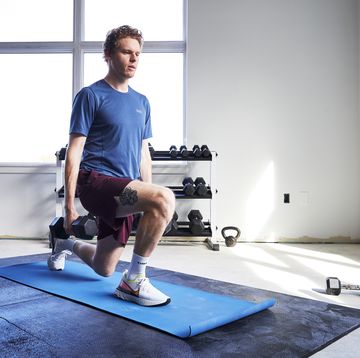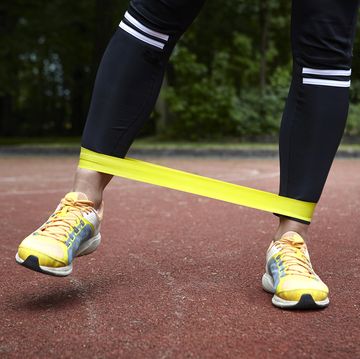You may remember the "Scientific 7-Minute Workout," a circuit exercise routine that became a major sensation following a 2013 article by Gretchen Reynolds in the New York Times. The workout involved 12 simple bodyweight exercises, done at a high intensity to give you an effective workout that required no special equipment or preparation and took almost no time at all. What a breakthrough! Well, sort of.
Circuits routines, of course, have been around for ages. A few months ago, Michael Joyner of the Mayo Clinic mentioned that this 7-minute routine was pretty similar to an old exercise program developed by the Royal Canadian Air Force to keep its pilots fit when they were stationed at remote bases with no exercise equipment. It consisted of just five basic exercises – hence its name, 5BX – and took 11 minutes. The biggest difference was that the fifth exercise, which involved running on the spot alternating with a sequence of jumps every 75 steps, lasted for six minutes, arguably providing a stronger aerobic stimulus.
Once I'd heard about 5BX, I started noticing its name popping up in a variety of places (it turns out, for example, that my uncle has been doing it for almost 50 years now), so I decided to write a Globe and Mail column about it. It was a lot of fun digging into the archives. 5BX was actually a massive bestseller in the 1960s and 1970s, selling 23 million copies and being distributed around the world.
You can download the original plan here. It shows you how to do the five exercises, and tells you how many you should aim for to achieve varying degrees of fitness. There are six different charts, with the exercises getting slightly harder on each chart; the sixth chart warns: "Physical capacities in this chart are usually only found in champion athletes." Here's what the exercises from that chart look like:
The fifth exercise, which involves doing 10 "jack jumps" every 75 steps, made me laugh. Surely no one actually did that. But then I came across a great old article from the Globe and Mail from 1963, which includes this photo of Bill Orban, the exercise scientist who developed 5BX:
5BX has stood the test of time very well: it would make a great state-of-the-art exercise routine with just a few minor alterations (e.g. sit-ups with straight back and straight legs put a lot of strain on your back, which is why most people now do crunches). The text of the Globe article, on the other hand, hasn't aged quite as well:
Exercise is a habit, he (Orban) says, like tying a shoe lace, but he has found that women generally do not like exercise. "They're really not interested in physical fitness," he said. "Well, they're interested, but only as long as it will give them better figures."
Oh well. Ignore what he says and give the exercise routine a try. With the very detailed performance benchmarks, it's interesting to see where you slot in.
***
Read the Sweat Science book, and follow the latest posts via Twitter, Facebook, or RSS.














